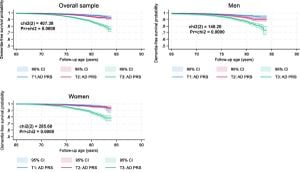Thai economic indicators have come under scrutiny as the National Economic and Social Development Council (NESDC) released its forecasts for growth in 2025. The Council projects growth between 2.3% and 3.3%, significantly lower than the government’s optimistic expectation of 3% to 3.5%. This disparity has sparked debates among finance officials and analysts alike about the realism of these figures and the broader outlook for the Thai economy.
Chirashaya Amornwiwat, the Deputy Finance Minister, has voiced skepticism about government growth estimates. He pointed out, "The actual growth over the past decade averaged under 2%, meaning NESDC's forecasts are more realistic." This perspective reveals concerns about the government's ambition to exceed prior performance amid challenges, particularly since the average growth has been less than 2%, with last year’s performance barely breaking through established targets.
The discussions on economic forecasts come during concerning times as several factors influence the country's financial momentum. For one, there are indications from the Purchasing Managers’ Index (PMI) which has shown tepid recovery. Notably, the PMI has yet to demonstrate the robustness anticipated based on export figures, leading to doubts about the overall health of the economic backdrop.
While exports climbed past government expectations, critiques have emerged rooted not within the government’s negotiation prowess, but rather from external market dynamics. One commentator aptly noted, "Exports gained not by government negotiation but from pre-emptive buying due to 'Trump 2.0' tariffs." This remark reflects on how international trade pressures can unexpectedly boost certain sectors within Thailand's economy, separate from domestic policy impacts.
Another area of concern within the economic framework has been private sector investment, which remains lackluster. There have been calls for the government to adopt strategic initiatives more reflective of sustained growth. A financial analyst voiced the sentiments shared within the business community: "If we argue for 3% growth this year, we'll wait to see how the government executes its plans." This anticipation underpins the belief of many stakeholders who are eager to measure the government's commitment to fostering real economic improvement.
While the government has made grand proclamations about its ability to drive growth through financial incentives and cash disbursement measures, many critics warn this approach is short-sighted. They posit this reliance on immediate fiscal influences could create dependency on such measures rather than fostering organic, sustainable economic expansion.
Looking to the horizon, the government's strategy of achieving high GDP growth will continue to face tests as it aligns with the realities presented by current economic indicators. With external pressures, workforce demands, and potential geopolitical influences affecting trade dynamics, the expectation for healthy growth metrics requires careful planning and decision-making on the part of those governing.
With upcoming elections and potential shifts within the policy arena, the outcomes of these discussions lead to increased speculation among business sectors. Companies watch closely to see how the administration navigates through these challenges and if they can pivot toward strategies favoring genuine economic traction rather than temporary gains.
Thai citizens, businesses, and economic observers now wait to assess the effectiveness of governmental maneuvers as next year approaches, holding onto hopes for rigorous growth and financial health for the nation.



